The Lonely Bisexual Vampires of 'The Hunger'
Would you spend eternity with Catherine Deneuve?
This is the Sunday Edition of Paging Dr. Lesbian. If you like this type of thing, subscribe, and share it with your friends. Upgrade your subscription for more, including weekly dispatches from the lesbian internet, monthly playlists, and a free sticker.
The Hunger is a movie defined by legends. The feature film debut of beloved filmmaker Tony Scott, who went on to direct films like Top Gun and True Romance, it jump-started his successful career in Hollywood. And then there’s the faces in front of the camera. In a delicious feast for the eyes, The Hunger stars three icons of the screen: David Bowie, Catherine Deneuve, and Susan Sarandon.
As for the plot, it mines the depths of one of the foundational myths of horror: the vampire. The Hunger’s legend has also become larger than the film itself. A staple of the lesbian community in the 1980s, Rose Troche made her groundbreaking film Go Fish in part because The Hunger was constantly playing in lesbian bars, and she wanted something else to watch.
Arguably the first truly modern vampire film, and certainly the most high-profile “lesbian vampire film” (though that title is something of a misnomer), The Hunger is often discussed in terms of style over substance. But what do its style and its substance say?
Deneuve plays Miriam Blaylock, an ancient vampire – though that word is never used – originally from Egypt. She’s married to John (Bowie), whom she turned into a vampire so he could be her eternal companion. A glamorous, high-class duo, they live in a mausoleum-like house and silently prowl emo clubs in cool sunglasses to find their next victims. Except there’s a flaw in their eternal love story. John can’t live forever because he’s only a vampire hybrid, not a true vampire like Miriam. He begins rapidly aging, and while seeking a potential cure, Miriam also finds his replacement.
Susan Sarandon plays Sarah Roberts, a doctor who specializes in ageing. She’s too late to save John, but Miriam captures her attention, and she soon finds herself under the huntresses’ thrall. Though Miriam is desperate to find another mate, Sarah isn’t sure she wants what Miriam is offering, even though she’s spent her career studying the possibility of immortality.
On the surface, The Hunger seems to uphold the tropes of the lesbian vampire film, and of queer villains in general. Miriam is certainly predatory, and she literally steals Sarah away from her bumbling boyfriend, who rightly surmises that Sarah has “changed” since meeting Miriam. The film also updates the vampire myth in an interesting way. In this story, vampirism is more like a disease, and Miriam’s blood infects her human companions, turning them into temporarily ageless creatures like herself. The film came out in 1983, too early to have been a direct commentary on the HIV/AIDS crisis, but the connection between queerness, disease, and infection remains a prescient one.
More so than most other films of this type, The Hunger highlights the ways vampires are inherently queer. In a 2018 journal article, folklore scholar Kimberly J. Lau writes that vampires are “Constituted by queerness—predominantly by an affiliation fixed through images linking same-sex desire, blood, contamination, and death but also by an unmooring of gender signifiers across a range of polymorphous desires [...].” Indeed, Miriam’s life is defined by the dissolution of boundaries – between human and non-human, dead and alive, male and female, pleasure and pain. As such, her identity is hard to pin down.
Calling Miriam a lesbian vampire doesn’t make much sense, despite the microgenre the film supposedly falls under. In fact, many movies deemed “lesbian vampire films” depict bisexuality – at least the practice, if not the identity – rather than lesbianism. Miriam is more like a bisexual vampire; an equal opportunity killer and lover. This aligns with the vampiric notion of porous boundaries. As Jo Eadie writes in a 1997 journal article, “the presence of a bisexual figure in film is an indicator that a cultural tension is being broached, whose contours the bisexual enables the audience to negotiate, and whose dangers the bisexual always embodies. As an outsider s/he is the one who is seen as going beyond the limits, and who thereby serves to teach a lesson about what those limits are [...].”
The film takes care to avoid labels – the word vampire is never uttered, nor the words gay, bisexual, or straight. Miriam’s renunciation of such divisions is part of what makes her so alluring, and so dangerous. In Gender and Contemporary Television, Chloe Benson writes that, “Through the exchange of blood, the vampire demonstrates a mode of eroticism that disavows the sexual organs and, in many cases, gender altogether.” Miriam’s actions underscore the fluidity of (her) desires, sexuality, and violence.
Many discussions of the film center on its lesbian sex scene, which likely accounts for why the film played in lesbian bars so often. Though Tony Scott is far from a subtle director and the encounter is often framed in lurid terms, the scene is less pornographic than you might expect. In fact, it’s one of the most human scenes in the entire film. Some of this credit should go to the actors, who play the moment with a sense of ease. Sarandon in particular deserves a shout-out for her part in its construction, as Scott wanted Sarah to be drunk during their lovemaking. “Really?” She told him. “To go to bed with Catherine Deneuve you need to be drunk? Let’s get rid of that right away.”
Despite the power Miriam has over Sarah, the two women appear to be equal participants in the seduction. Sarah asks Miriam if she’s making a pass at her, after which Sarah conspicuously spills sherry on her white t-shirt. They drink each other’s blood, presumably as a means to turn Sarah into a human/vampire hybrid. The white curtains billow, a tranquilizing opera song plays.
More so than for its content, the scene is memorable because the lesbian sex scene carries so much weight in our culture, transmitting many conflicting messages. It can stand for carnal passion, seduction, titillation, exploitation, transgression, or the passage from innocence to sin. The meaning of a scene like this isn’t fixed, especially in a film that traffics more in symbolism than in text.
Miriam pushes against typical lesbian (or bisexual) vampire tropes in other ways. Though she’s a killer and doesn’t seem to have much empathy for others, she’s not a sadist. A hedonist, certainly, but her pleasure doesn’t stem from the pain of others. Miriam’s great deficit is her loneliness, companionship her true aim. If vampirism is a disease, then loneliness is its worst symptom, for while it’s not literally deadly, it may be emotionally so. Miriam spells it out for Sarah after she turns her. “We’re damned to live forever. With no release. No end. And I need you to share it with me,” she declares, more of a demand than a plea.
More than anything, The Hunger considers the passage of time, asking the question, if you had eternity, who would you want to share it with? Lau writes that “Figuring a fantastic immortality and a decidedly queer life/time, the vampire confounds assumptions about the worthy life predicated on dominant ideologies of temporality and invites a consideration of other ways of living, other ways of being.” Owing in part to this extraordinary temporality, vampirism emerges as queer from the get-go.
It’s no wonder that two of our greatest bisexual icons (Bowie and Sarandon, of course) star in a film that expounds upon the fluidity of desire, gender, and identity. But for Miriam, the choice is not between a man and a woman, but between desolation and attachment, a predicament that feels very human, after all.



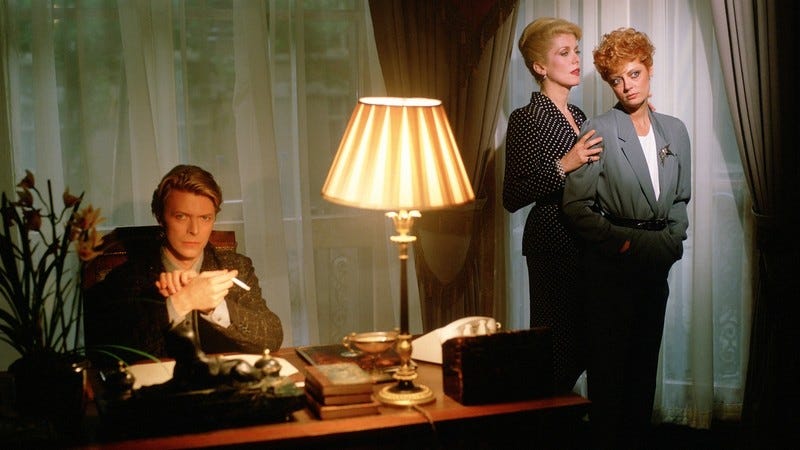
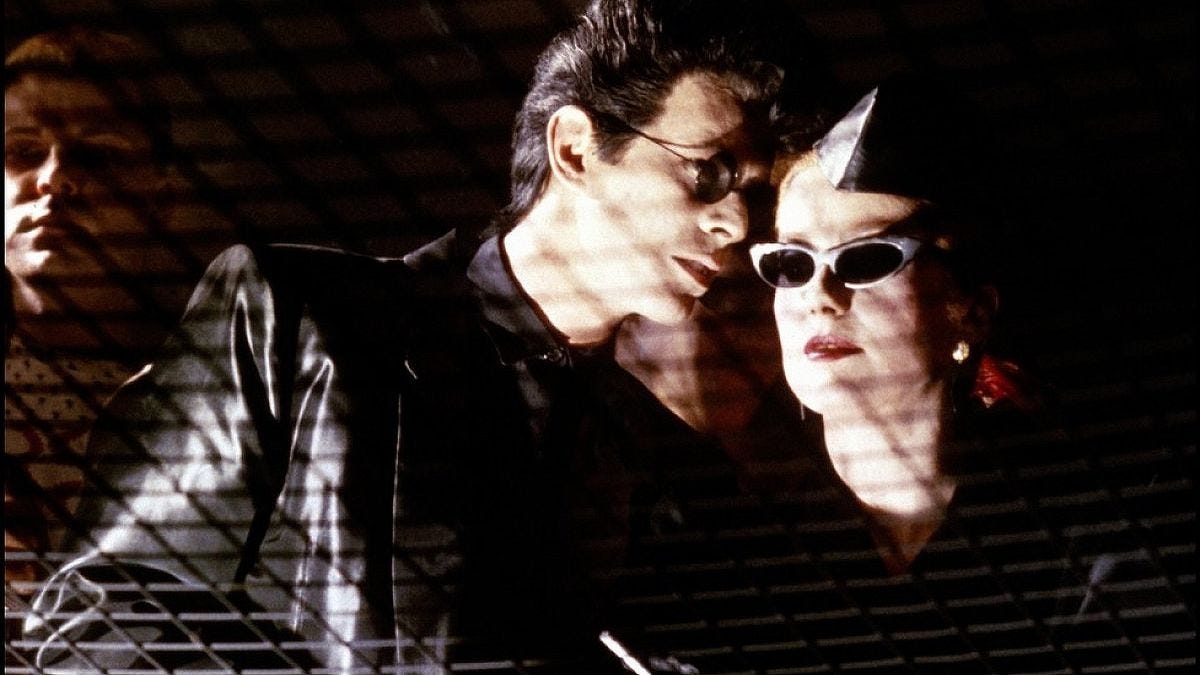
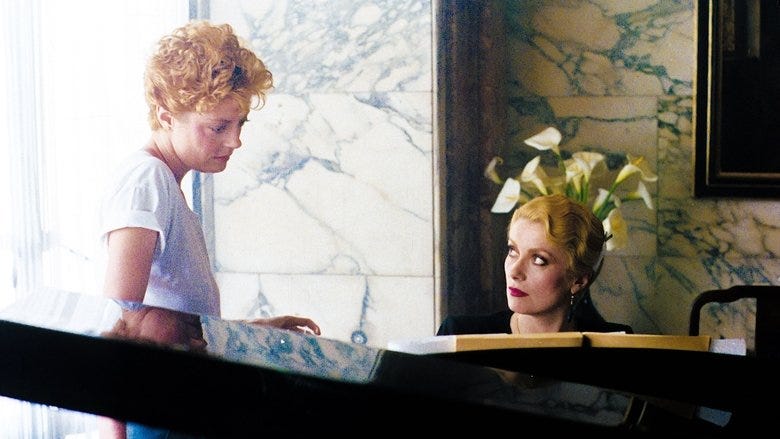
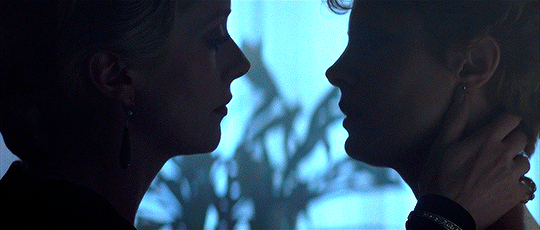
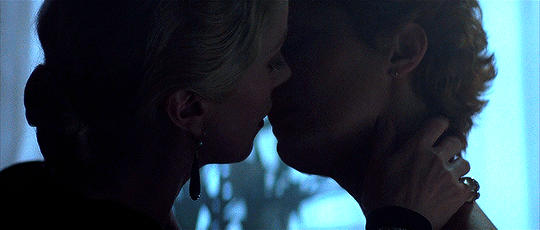
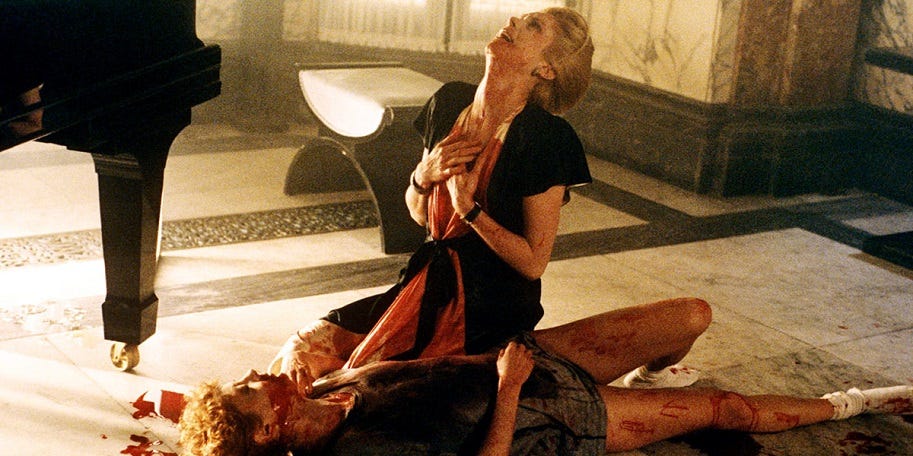
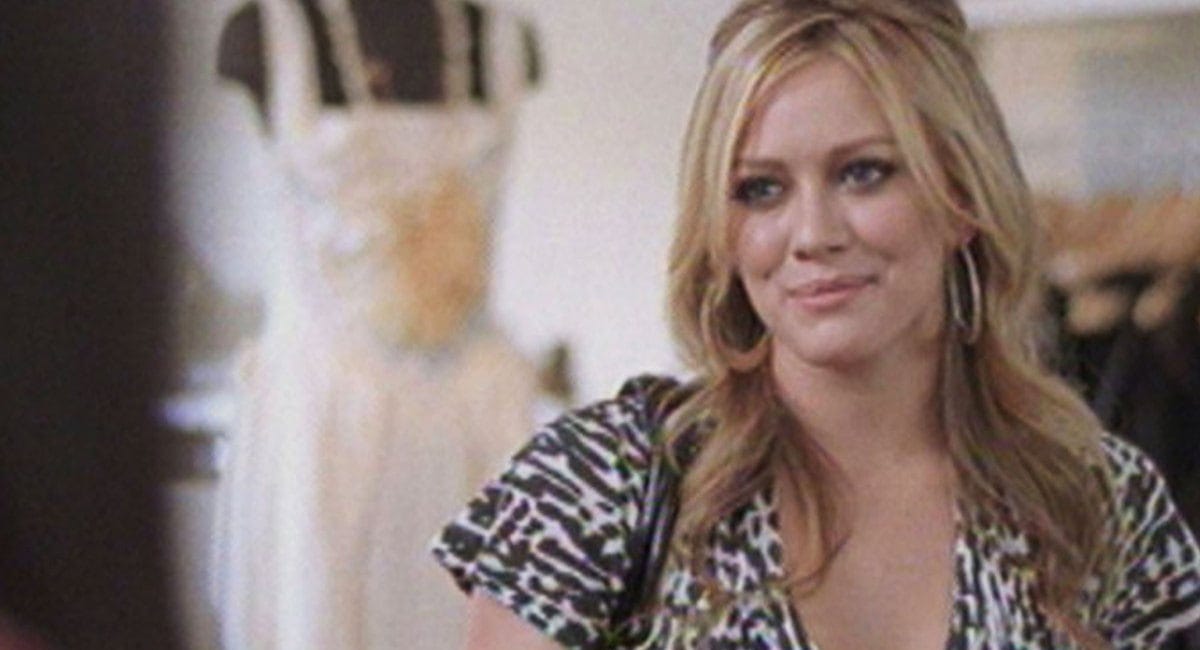
God, I loved that movie!
Streaming on TUBI right now.